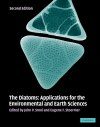By: John P Smol(Editor), Eugene E Stoermer(Editor)
667 pages, 84 b/w photos and b/w illustrations, 2 tables
![The Diatoms The Diatoms]()
Click to have a closer look
About this book
Contents
Customer reviews
Biography
Related titles
About this book
This much revised and expanded edition provides a valuable and detailed summary of the many uses of diatoms in a wide range of applications in the environmental and earth sciences. Particular emphasis is placed on the use of diatoms in analysing ecological problems related to climate change, acidification, eutrophication, and other pollution issues. The chapters are divided into sections for easy reference, with separate sections covering indicators in different aquatic environments. A final section explores diatom use in other fields of study such as forensics, oil and gas exploration, nanotechnology, and archaeology. Sixteen new chapters have been added since the first edition, including introductory chapters on diatom biology and the numerical approaches used by diatomists. The extensive glossary has also been expanded and now includes over 1,000 detailed entries, which will help non-specialists to use The Diatoms effectively.
Contents
Preface
Part I. Introduction:
1. Applications and uses of diatoms: prologue
2. The diatoms: a primer
3. Numerical methods for the analysis of diatom assemblage data
Part II. Diatoms as Indicators of Environmental Change in Flowing Waters and Lakes:
4. Assessing environmental conditions in rivers and streams with diatoms
5. Diatoms as indicators of long-term environmental change in rivers, fluvial lakes and impoundments
6. Diatoms as indicators of surface-water acidity
7. Diatoms as indicators of lake eutrophication
8. Diatoms as indicators of environmental change in shallow lakes
9. Diatoms as indicators of water-level change in freshwater lakes
10. Diatoms as indicators of hydrologic and climatic change in saline lakes
11. Diatoms in ancient lakes
Part III. Diatoms as Indicators in Arctic, Antarctic and Alpine Lacustrine Environments:
12. Diatoms as indicators of environmental change in subarctic and alpine regions
13. Freshwater diatoms as indicators of environmental change in the High Arctic
14. Diatoms as indicators of environmental change in Antarctic and subantarctic freshwaters
Part IV. Diatoms as Indicators in Marine and Estuarine Environments:
15. Diatoms and environmental change in large brackish-water ecosystems
16. Applied diatom studies in estuaries and shallow coastal environments
17. Estuarine paleoenvironmental reconstructions using diatoms
18. Diatoms on coral reefs and in tropical marine lakes
19. Diatoms as indicators of former sea levels, earthquakes, tsunamis and hurricanes
20. Marine diatoms as indicators of modern changes in oceanographic conditions
21. Holocene marine diatom records of environmental change
22. Diatoms as indicators of paleoceanographic events
23. Reconsidering the meaning of biogenic silica accumulation rates in the glacial Southern Ocean
Part V. Other Applications:
24. Diatoms of aerial habitats
25. Diatoms as indicators of environmental change in wetlands and peatlands
26. Tracking fish, seabirds, and wildlife population dynamics with diatoms and other limnological indicators
27. Diatoms and archaeology
28. Diatoms in oil and gas exploration
29. Forensic science and diatoms
30. Toxic marine diatoms
31. Diatoms as markers of atmospheric transport
32. Diatoms as nonnative species
33. Diatomite
34. Stable isotopes from diatom silica
35. Diatoms and nanotechnology: early history and imagined future as seen through patents
Part VI. Conclusions:
36. Epilogue: a view to the future
Glossary, acronyms, and abbreviations
Index
Customer Reviews
Biography
John P. Smol co-heads the Paleoecological Environmental Assessment and Research Laboratory (PEARL) at Queen's University, Ontario, where he is Professor in the Department of Biology. He is editor-in-chief of the Journal of Paleolimnology.
Eugene F. Stoermer is a past-President of the Phycological Society of America and the International Association for Diatom Research. He has worked at the University of Michigan since 1965 where he is Professor in the School of Natural Resources and Environment, studying various aspects of diatom biology and ecology.
By: John P Smol(Editor), Eugene E Stoermer(Editor)
667 pages, 84 b/w photos and b/w illustrations, 2 tables
"I'd recommend this book to all students doing diatom research. It is an excellent source for basic information [...] The bibliography at the end of each chapter is excellent [...] [The book] could also be used as a textbook for a course on diatoms."
– Diatom Research
"[...] this is an excellent work and I commend the editors and authors for developing and now expanding on a comprehensive and coherent book that makes clear that diatom science will continue to grow for the next generation of scientists."
– The Holocene



































